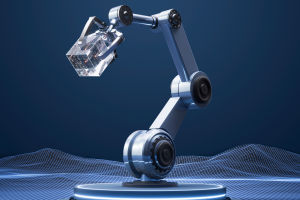Windmills have been a symbol of human ingenuity for centuries, harnessing the power of the wind to grind grain, pump water, and generate electricity.
But what happens when there's no wind? Can a windmill still turn?
The answer lies in the evolution of technology and the various ways you can replicate or replace natural wind to keep these iconic structures functioning.
Traditional Windmills: A Dependence on Wind
Traditional windmills, like those seen in picturesque Dutch landscapes, rely solely on the kinetic energy provided by natural wind. Their sails catch the wind, converting its energy into rotational motion, which then powers various mechanical processes. Without wind, these windmills would remain stationary, unable to perform their tasks.
Modern Wind Turbines: An Evolution in Design
Modern wind turbines, used primarily for generating electricity, are more advanced than their traditional counterparts. These turbines are designed to operate efficiently across a range of wind speeds, but they still depend on wind to generate power. However, engineers have developed several methods to ensure that these turbines can continue to generate electricity even when the wind isn't blowing.
Energy Storage Solutions
One of the primary solutions to the problem of intermittent wind is energy storage. By storing excess energy produced during windy periods, modern wind turbines can continue to supply power when the wind is not blowing. There are several methods of energy storage, including:
1. Batteries: Large-scale battery storage systems can store electricity generated by wind turbines. When the wind stops, the stored energy can be released to maintain a steady power supply.
2. Pumped Hydro Storage: This method involves using excess electricity to pump water uphill into a reservoir. When power is needed, the water is released to flow back downhill through turbines, generating electricity.
3. Compressed Air Energy Storage (CAES): Excess electricity is used to compress air, which is stored in underground caverns. When power is needed, the compressed air is released to drive turbines.
Hybrid Systems
Another approach is to integrate wind turbines with other forms of renewable energy, such as solar panels. Hybrid systems can provide a more reliable power supply by balancing the intermittent nature of wind and solar energy. When the wind isn't blowing, solar panels can continue to generate electricity, and vice versa.
Artificial Wind Generation
In some cases, it is possible to create artificial wind to turn windmills. This can be done using mechanical devices such as fans or blowers. Although not as efficient or sustainable as natural wind, this method can be useful in specific situations where continuous operation of a windmill is critical.
Innovations in Wind Turbine Design
Engineers and researchers are continually exploring new ways to improve wind turbine design to make them less dependent on natural wind. Some of these innovations include:
1. Vertical Axis Wind Turbines (VAWTs): Unlike traditional horizontal axis wind turbines, VAWTs can capture wind from any direction, making them more efficient in areas with variable wind directions.
2. Kite Power Systems: These systems use kites tethered to ground-based generators. The kites fly at high altitudes where winds are more consistent and stronger, generating electricity more reliably.
3. Wind Augmentation: This involves using structures or devices to channel and amplify natural wind, increasing the efficiency of wind turbines.
The Future of Wind Energy
The future of wind energy looks promising, with continuous advancements in technology and design aimed at overcoming the limitations of natural wind dependency. Researchers are exploring new materials, aerodynamic improvements, and more efficient energy storage solutions to ensure that wind turbines can continue to provide a reliable source of renewable energy, even when the wind isn't blowing.
While traditional windmills rely entirely on natural wind to function, modern wind turbines have evolved to overcome this limitation through energy storage, hybrid systems, artificial wind generation, and innovative designs. As technology advances, the reliance on natural wind will continue to decrease, making wind energy a more dependable and sustainable resource. By embracing these innovations, you can ensure that the iconic windmill continues to turn, powering your world in new and exciting ways.


